热成型板的普及使用也促使热成型板的焊接技术要跟上潮流,下边简单介绍下热成型板的点焊工艺技术方法与流程-RSJ!
本文涉及一种适用于使用超高强度钢的汽车白车身结构强度焊接的方法,用于完成了车身GEO定位焊后增加车身结构强度的白车身点焊,属于汽车制造技术领域。
背景技术:
随着对汽车安全、节能等要求的提升,基于固溶强化、沉淀强化、细化晶粒、位错强化和相变强化(马氏体)的超高强度钢进入了实际生产应用阶段。为了提高和满足碰撞安全性能并提高车身部件强度,超高强度热成型刚点焊性能和技术的重要性就凸显了出来。
传统的汽车白车身使用的是镀锌板,两层镀锌板焊接时,使用铁屑进行夹紧定位。由于高强度热成型钢本身的材料特性,热成型钢白车身的焊接技术需要更强的焊接压力、更长的焊接时间和能量,故传统的定位销无法满足高强度的夹具定位需求,其耐磨性和强度都达不到工艺要求,无法满足焊接尺寸和固定定位尺寸精度的要求。在不满足精度的环境情况下,如果两层钢板直接搭接和预压会出现空隙或者出现在非规划的位置焊接的情况,对汽车整体的产品质量和结构强度有着较大的影响。
技术实现要素:
本发明要解决的技术问题是如何对超高强度钢的汽车白车身进行定位和点焊。
为了解决上述技术问题,本发明的技术方案是提供一种热成型钢白车身点焊方法,其特征在于,步骤为:
步骤1:将热成型钢汽车白车身的两层钢板的焊接面相互贴合;
步骤2:将所述两层钢板通过陶瓷定位销夹紧定位;
步骤3:在所述两层钢板上待点焊处外侧分别设置一电极帽;
步骤4:给两个电极帽之间施加焊接电流和焊接压力,使得所述两层钢板上待点焊处熔融并固化成焊接接头。
优选地,所述电极帽经过了用于提高硬度的热处理工艺。
优选地,所述步骤4中,焊点剪切强度位移≤5s/mm。
优选地,所述步骤4中,电极缩进量一致性≥97%。
优选地,所述步骤4中,当两层钢板中的薄板厚度为0.75~1mm时,焊接压力为3.9~4.3KN,焊接时间为330~440ms,焊接电流为10~12ms,电极帽直径为16mm。
优选地,所述步骤4中,当两层钢板中的薄板厚度为1.1~2mm时,焊接压力为4.4~6KN,焊接时间为460~660ms,焊接电流为12.5~15.5ms,电极帽直径为16~20mm。
优选地,所述步骤4中,焊接参数如表1所示:
表1 热成型钢焊接参数表
表1中,板厚表示两层钢板中的薄板厚度,接触面直径表示电极帽端面与钢板接触面的直径
相比现有技术,本发明具有如下有益效果:
1、配套热成型钢的使用,电极帽采用高硬度热处理,提高配套夹具整体精度和耐磨使用寿命;
2、采用陶瓷销作为夹具的定位,有着弯曲强度高和电绝缘的特点,安全,且能减少后续清理焊渣的工作量;
3、采用新焊接工艺参数和高强度配套夹具的模式,提高产品一次合格率,提高了生产效率;
4、高精度焊接夹具的配套使用,从缩短工位停机时间入手,有效降低了焊装车间的综合成本;
5、首次将陶瓷定位销和经高硬度热处理工艺的电极帽压块引入热成型钢点焊领域,推进了焊接整体工艺的进步。
附图说明
图1为热成型钢白车身点焊时示意图;
图2为传统板材和热成型钢焊接压力与板厚关系对比图;
图3为传统板材和热成型钢焊接时间与板厚关系对比图;
图4为传统板材和热成型钢焊接电流与板厚关系对比图。
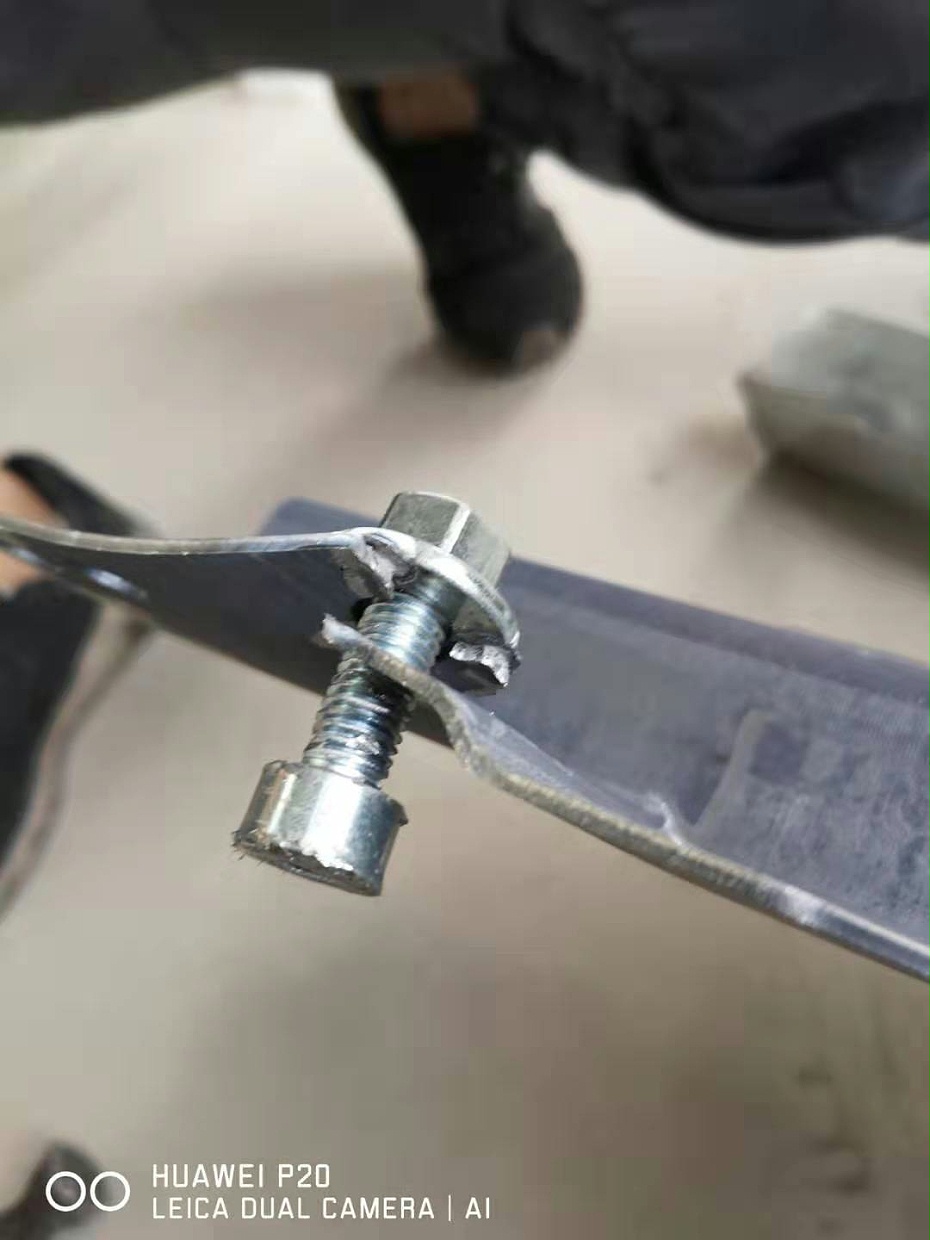
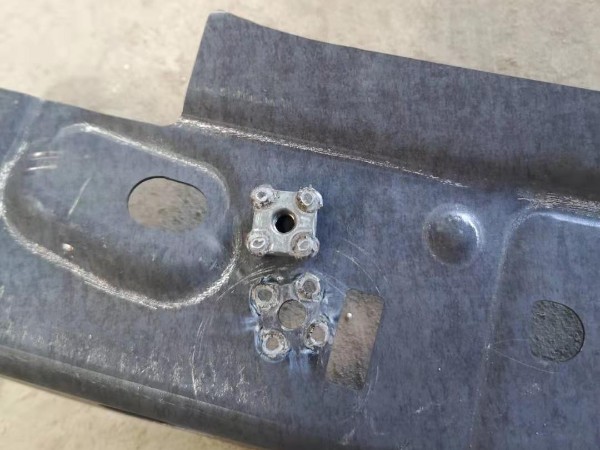
具体实施方式
下面结合具体实施例,进一步阐述本发明。应理解,这些实施例仅用于说明本发明而不用于限制本发明的范围。此外应理解,在阅读了本发明讲授的内容之后,本领域技术人员可以对本发明作各种改动或修改,这些等价形式同样落于本申请所附权利要求书所限定的范围。
一种热成型钢白车身点焊方法,步骤为:
步骤1:将热成型钢汽车白车身的两层钢板的焊接面1相互贴合,如图1所示;
步骤2:两层钢板通过陶瓷定位销2夹紧定位;
步骤3:两层钢板上待点焊处外侧分别设置一电极帽3;电极帽3使用了高硬度热处理工艺,以保证白车身焊接过程中尺寸的稳定性;
步骤4:给两个电极帽3之间施加焊接电流和焊接压力,使得两层钢板上待点焊处熔融并固化成焊接接头。
陶瓷定位销的技术指标如下:
1)超强的耐磨性:
压缩强度(MPa):2300
弯曲强度(MPa):240
弹性比率(GPa):280
2)防粘附性:可以有效减少焊渣,灰尘的附着;
3)电绝缘:满足沃尔沃严格的全球绝缘技术规范要求;
4)高温下的超高强度,耐热性(℃):1700
5)使用寿命超长:确保焊接工艺最小的废品率以及最短的停机时间,有效降低焊装车间的综合成本。
本实施例所采用的陶瓷销的型号有:D15-040960385(31915024),D13-034422378(31915023),D15-040962889(31553145)。
热成型钢点焊的技术指标如下:
1)点焊焊接速度:2s/点;
2)焊点剪切强度位移:≤5s/mm;
3)电极缩进量(热成型钢母材剩余厚度)一致性≥97%
4)焊枪的焊接压力为普通镀锌板材的2倍。
对传统的镀锌板和本发明热成型钢(硼钢-Boron-Steel)进行多次实验过程,并控制同样板厚,以进行焊接参数的对比,从而实现焊接理论和实践相结合,得出热形成钢白车身的焊接工艺参数设置规律,实现对热成型刚车身焊接在实际生产工艺中的应用。根据点焊电阻参数标ES-6M2A-1K251-A*,电极参数根据ISO5821实施,针对碳钢的层叠焊接、高强度涂层钢的层叠焊接及合金板材GMT焊接进行焊接参数的实验探索,实验数据如下:
表1 热成型钢焊接参数表
表2 传统板材焊接参数表
热成型钢与传统板材焊接参数分别如表1和表2所示,传统板材和热成型钢焊接压力与板厚关系对比如图1所示,传统板材和热成型钢焊接时间与板厚关系对比如图2所示,传统板材和热成型钢焊接电流与板厚关系对比如图3所示。
由上述数据可以看出:
一、焊接电流、电压和焊接时间在热成型钢上的应用设置,根据板厚的不同,变化曲线及趋势相对普通镀锌板几乎一致;
二、热成型钢的白车身焊接压力相比镀锌板起点压力要求较高,随着板厚的增加相比镀锌板的焊接压力增幅从70%下降到30%左右;
三、由于热成型钢细化晶粒、位错强化和相变强化(马氏体)的特点,焊接时间相比镀锌板的增幅在100%左右,需要更长的焊接保压时间以熔穿钢板,不足够的焊接保压时间在实验中会造成虚焊或焊接强度不够等各种质量欠缺的问题,故足够的焊接时间针对热成型刚是必须的;
四、热成型钢的焊接电流,相比镀锌板相差无几,即当焊接同板厚时所需的能量几乎一致;
五、综合比较热成型钢(硼钢)的焊接参数,较传统镀锌板在保持焊点尺寸和电极帽尺寸的情况下,各项焊接参数均需要提升30%~100%以满足热成型钢的焊接需求。
为配套热成型钢的使用,本发明创新性地利用陶瓷销作为夹具的定位,并同时对电极帽压块使用了高硬度热处理工艺,以保证白车身焊接过程中尺寸的稳定性,提高配套夹具整体精度和耐磨使用寿命。
在工艺参数方面,通过不断的测试和检测焊接质量、焊接剪切强度位移及测试焊接后的电极缩进量等,将热成型钢的焊接电流、焊接压力和焊接保压时间等固化和保留下来,开创并建立了国内热成型钢白车身焊接的一套技术指标。
通过陶瓷定位销和焊接工艺参数的使用,不仅可以提高白车身的焊接定位精度,同时可以补全热成型钢白车身应用领域的实践空白,为制定行业标准和提高焊接速率提供了基础。
更多热成型焊接技术详情请联系昆山荣仕杰!点击本网站首页观看视频资料。
英文版;
This paper relates to a method for strength welding of automobile body-in-white structure using ultra-high-strength steel. It is used to complete the body-in-white spot welding which increases the structural strength of the vehicle body after GEO welding.
It belongs to the field of automobile manufacturing technology.
Background technique:
With the improvement of requirements for safety and energy saving of automobiles, ultra-high-strength steels based on solid solution
strengthening, precipitation strengthening, grain refinement, dislocation strengthening and phase transformation strengthening (martensite) have entered the practical production application stage. In order to improve and meet crash safety performance
and increase the strength of body parts, the importance of ultra-high strength thermoforming just spot welding performance and technology is highlighted.
The traditional car body-in-white uses a galvanized sheet, and when the two-layer galvanized
sheet is welded, it is clamped and positioned using iron filings. Due to the material properties of high-strength thermoformed steel, the welding technology of thermoformed steel body-in-white requires stronger welding pressure, longer welding time and
energy, so the traditional positioning pin can not meet the high-strength fixture positioning requirements. The wear and strength are not up to the process requirements, and the welding size and the fixed positioning dimensional accuracy cannot be met.
In the case of an environment that does not meet the accuracy, if the two layers of steel plates are directly overlapped and pre-stressed, there will be voids or welding in an unplanned position, which has a great influence on the overall product quality
and structural strength of the automobile.
Technical realization elements:
The technical problem to be solved by the present invention is how to position and spot weld the automobile white body of ultra high strength
steel.
In order to solve the above technical problem, the technical solution of the present invention is to provide a hot-formed steel body-in-white spot welding method, characterized in that the steps are:
Step 1: bonding the welding
faces of the two layers of steel plates of the hot-formed steel automobile body-in-white;
Step 2: clamping and positioning the two-layer steel plate through a ceramic positioning pin;
Step 3: respectively, an electrode cap is respectively
disposed on the outer side of the two-layer steel plate to be spot-welded;
Step 4: Apply welding current and welding pressure between the two electrode caps, so that the spot welding on the two steel plates is melted and solidified into a welded
joint.
Preferably, the electrode cap is subjected to a heat treatment process for increasing hardness.
Preferably, in the step 4, the joint shear strength displacement is ≤5 s/mm.
Preferably, in the step 4, the electrode
retraction amount is consistent by ≥97%.
Preferably, in the step 4, when the thickness of the thin plate in the two-layer steel plate is 0.75 to 1 mm, the welding pressure is 3.9 to 4.3 KN, the welding time is 330 to 440 ms, the welding current
is 10 to 12 ms, and the electrode cap diameter is 16 mm. .
Preferably, in the step 4, when the thickness of the thin plate in the two-layer steel plate is 1.1 to 2 mm, the welding pressure is 4.4 to 6 KN, the welding time is 460 to 660 ms,
the welding current is 12.5 to 15.5 ms, and the electrode cap diameter is 16 ~20mm.
Preferably, in the step 4, the welding parameters are as shown in Table 1:
Table 1 Thermoforming steel welding parameters table
In Table
1, the plate thickness indicates the thickness of the thin plate in the two-layer steel plate, and the diameter of the contact surface indicates the diameter of the contact face of the electrode cap and the steel plate.
Compared with the prior
art, the present invention has the following beneficial effects:
1. The use of matching thermoformed steel, the electrode cap adopts high hardness heat treatment to improve the overall precision and wear life of the supporting fixture;
2. The ceramic pin is used as the positioning of the fixture, which has the characteristics of high bending strength and electrical insulation, is safe, and can reduce the workload of subsequent cleaning of the welding slag;
3. Adopt new
welding process parameters and high-strength supporting fixture mode to improve the first pass rate of products and improve production efficiency;
4. The matching use of high-precision welding fixtures starts with shortening the station downtime,
which effectively reduces the comprehensive cost of the welding shop;
5. For the first time, ceramic locating pins and electrode cap briquettes with high hardness heat treatment process were introduced into the field of thermoforming steel
spot welding, which promoted the progress of the overall welding process.
DRAWINGS
Figure 1 is a schematic view of a hot-formed steel body-in-white spot welding;
Figure 2 is a comparison diagram of the relationship between
the welding pressure and the plate thickness of the conventional sheet and the thermoformed steel;
Figure 3 is a comparison diagram of the relationship between welding time and plate thickness of conventional sheet and thermoformed steel;
Figure 4 is a comparison of welding current and plate thickness of conventional sheet and thermoformed steel.
detailed description
The invention is further illustrated below in conjunction with specific embodiments. It is
to be understood that the examples are not intended to limit the scope of the invention. In addition, it should be understood that various changes and modifications may be made by those skilled in the art in the form of the present invention.
A hot-formed steel body-in-white spot welding method, the steps are:
Step 1: bonding the welding faces 1 of the two-layer steel plate of the hot-formed steel automobile body-in-white to each other, as shown in FIG. 1;
Step 2: The
two-layer steel plate is clamped and positioned by the ceramic positioning pin 2;
Step 3: an electrode cap 3 is respectively disposed on the outer side of the two-layer steel plate to be spot-welded; the electrode cap 3 uses a high-hardness
heat treatment process to ensure dimensional stability during the body-in-white welding process;
Step 4: Apply welding current and welding pressure between the two electrode caps 3, so that the spot welding on the two steel plates is melted
and solidified into a welded joint.
The technical specifications of ceramic positioning pins are as follows:
1) Superior wear resistance:
Compressive strength (MPa): 2300
Bending strength (MPa): 240
Elastic ratio (GPa): 280
2) Anti-adhesion: It can effectively reduce the adhesion of welding slag and dust;
3) Electrical insulation: meet Volvo's strict global insulation technical specifications;
4) Ultra high strength
at high temperature, heat resistance (°C): 1700
5) Long service life: ensuring the lowest scrap rate and the shortest downtime of the welding process, effectively reducing the overall cost of the welding shop.
The types of ceramic
pins used in this embodiment are: D15-040960385 (31915024), D13-034422378 (31915023), D15-040962889 (31553145).
The technical specifications of hot-formed steel spot welding are as follows:
1) Spot welding speed: 2s/point;
2) Welding point shear strength displacement: ≤ 5s / mm;
3) The amount of electrode indentation (residual thickness of thermoformed steel base material) is ≥97%
4) The welding pressure of the welding torch is twice that of ordinary
galvanized sheet.
The traditional galvanized sheet and the hot-formed steel (Boron-Steel) of the present invention were subjected to a plurality of experimental processes, and the same thickness was controlled to compare the welding parameters,
thereby realizing the combination of welding theory and practice. The welding process parameter setting law of the hot-formed steel body-in-white is realized, and the application of the hot-formed body welding in the actual production process is realized.
According to the spot welding resistance parameter standard ES-6M2A-1K251-A*, the electrode parameters are implemented according to ISO5821, and the experimental research on welding parameters of laminated welding of carbon steel, laminated welding of
high-strength coated steel and GMT welding of alloy sheet, experimental data as follows:
Table 1 Thermoforming steel welding parameters table
Table 2 Traditional plate welding parameter table
The welding parameters of
thermoformed steel and traditional plate are shown in Table 1 and Table 2. The relationship between welding pressure and plate thickness of traditional plate and thermoformed steel is shown in Figure 1. The relationship between welding time and plate
thickness of traditional plate and thermoformed steel is For example, as shown in Figure 2, the relationship between welding current and plate thickness of conventional sheet and thermoformed steel is shown in Figure 3.
It can be seen from
the above data:
First, the welding current, voltage and welding time on the hot-formed steel application settings, according to the thickness of the plate, the curve and trend is almost the same as ordinary galvanized sheet;
Second,
the white body welding pressure of the hot-formed steel is higher than the starting pressure of the galvanized sheet. As the thickness increases, the welding pressure increase of the galvanized sheet decreases from 70% to about 30%;
Third,
due to the characteristics of refinement grain, dislocation strengthening and phase transformation strengthening (martensite) of thermoformed steel, the welding time is about 100% higher than that of galvanized sheet, which requires a longer welding dwell
time to melt Wearing steel plates, insufficient welding dwell time will cause various problems such as insufficient welding or insufficient welding strength in the experiment, so sufficient welding time is necessary for thermoforming;
Fourth,
the welding current of the hot-formed steel is almost the same as that of the galvanized sheet, that is, the energy required for welding the same plate thickness is almost the same;
V. Comprehensive comparison of the welding parameters of hot-formed
steel (boron steel). Compared with the traditional galvanized sheet, the welding parameters need to be increased by 30% to 100% to meet the hot-rolled steel. Welding requirements.
In order to support the use of thermoformed steel, the invention
innovatively utilizes the ceramic pin as the positioning of the fixture, and at the same time uses a high hardness heat treatment process for the electrode cap compact to ensure dimensional stability during the body-in-white welding process and improve
the supporting fixture. Overall accuracy and wear life.
In terms of process parameters, the welding current, welding pressure and welding holding time of the hot formed steel are solidified and retained by continuous testing and testing of
welding quality, welding shear strength displacement and testing of electrode shrinkage after welding. Created and established a set of technical indicators for domestic thermoforming steel body-in-white welding.
Through the use of ceramic
locating pins and welding process parameters, not only can the welding body positioning accuracy be improved, but also the practice gap in the field of hot-formed steel body-in-white can be complemented, which provides a basis for setting industry standards
and increasing welding rate.
For more details on thermoforming welding technology, please contact Kunshan Rongshijie! Click on the homepage of this website to watch the video material.
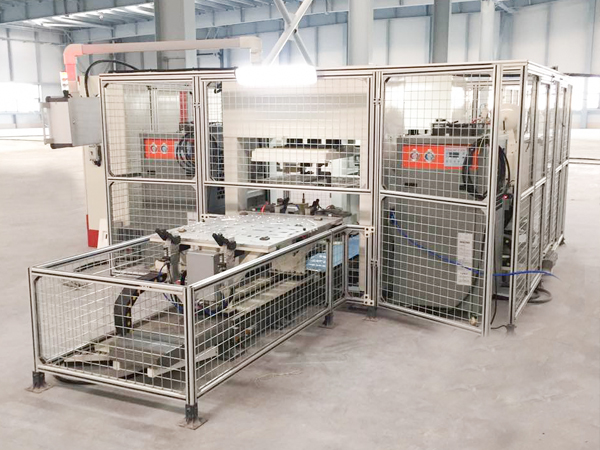
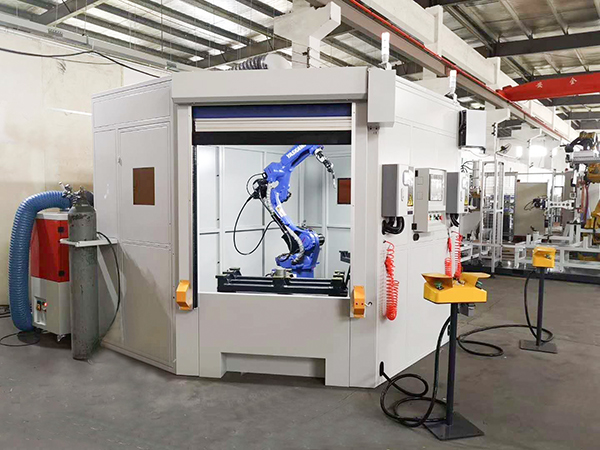
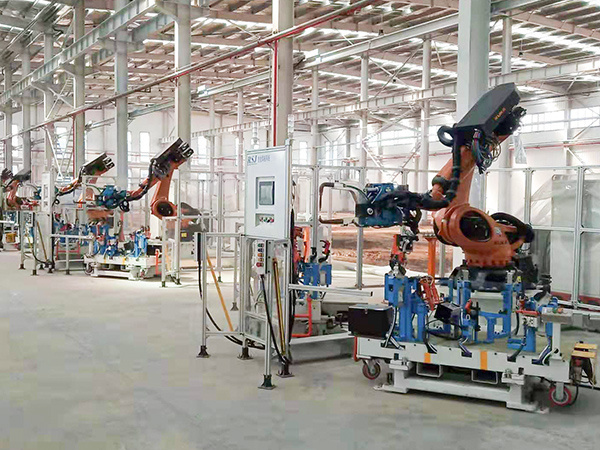
咨询热线
400-693-3363